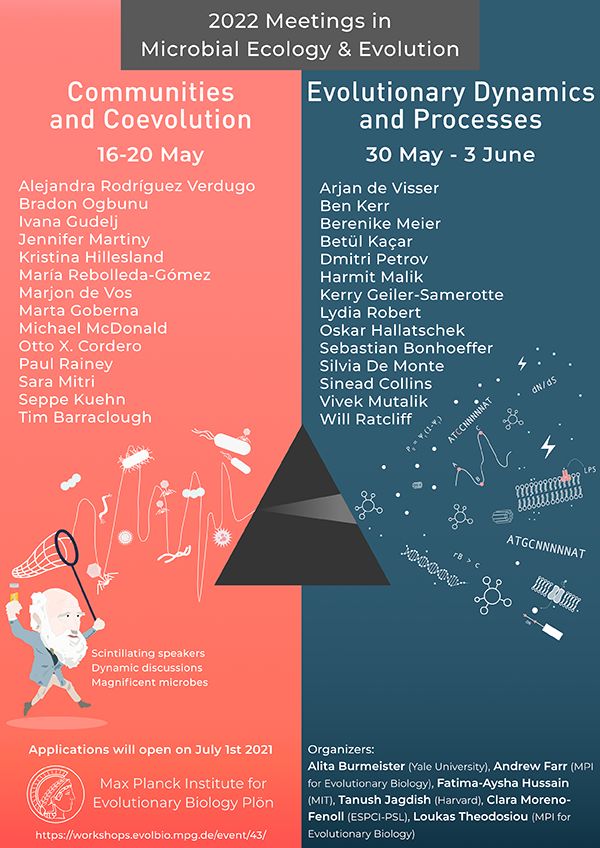Discharging deeply-sourced groundwater can contain reduced inorganic sulfur compounds that sustain chemoautotrophic ecosystems, yet questions remain regarding the role of CPR bacteria within these complex subsurface communities. Here, we studied two sites where microbial biofilms grow in cold, sulfide-rich groundwater derived from deep crustal and meteoric sources. Profiling of biofilms and...
Managing and engineering microbial communities relies on the ability to predict their composition. While progress has been made on predicting compositions on short, ecological timescales, there is still little work aimed at predicting compositions on evolutionary timescales. Therefore, it is still unknown for how long communities typically remain stable after reaching ecological equilibrium,...
City sewers shelter rich and diverse bacterial communities that are continuously exposed to antibiotic residues from human excreta, thus becoming a reservoir of resistance. Predicting the risk of antibiotic resistance evolution in city sewers thus requires a comprehensive understanding of the dynamics and evolution of wastewater bacterial communities. However, interactions between species...
Microbial communities comprise an astonishing diversity. Decomposing these often complex communities into small community modules holds the promise to elucidate the mechanisms behind the assembly and maintenance of this diversity. Among these, the apparent competition module, where two prey types compete and are preyed on by a shared predator, has received particular attention, often with a...
Hospital-built environments, and especially Intensive Care Units (ICUs), are hotspots for the emergence, transmission, and evolution of antimicrobial resistance (AMR). Most bacterial species able to acquire genes encoding resistance to antibiotics (ARGs), heavy metals (MRGs) or biocides (BcRGs) are colonizing opportunistic pathogens able to survive in abiotic systems (surfaces, medical...
The study of evolution has traditionally focused on the effects of selection on individuals. In recent years, attention has turned to the possibility of selection on communities. Yet much remains to be understood about the conditions necessary for selection to work on collectives. Previous theoretical works have shown that communities can evolve as units of selection provided that the...
Interspecific coevolutionary interactions can result in rapid biotic adaptation, but most studies have focused only on species pairs. Here, we (co)evolved five microbial species in replicate polycultures and monocultures for 10 weeks (~100 generations) and quantified local adaptation. Specifically, growth rate assays were used to determine adaptations of each species’ populations to (1) the...
Recent work from our lab showed that it is possible to use selfish genetic elements (SGEs) to link genes to community function. My project uses this same experimental approach and applies it to understand how horizontal gene transfer (HGT) might affect the establishment of the microbiome of the well-studied nematode Caenorhabditis elegans. To achieve this, I am experimentally evolving C....
Synthetic communities provide a proxy to reveal the ecological interaction between microbes, including metabolic cross feeding and inter-species signals that influence growth and differentiation. Among these laboratory communities, biofilm retains a spatially organized niche. We have recently demonstrated how metabolic interaction between Bacilli and Pseudomonads in biofilms is translated to...
Bacteria require a diverse set of metabolites to proliferate. While some bacteria fulfil their metabolic needs through de novo biosynthesis, others rely on uptake. Mechanisms enabling stable metabolite provisioning among free-living bacteria, i.e., in the absence of means for positive assortment, remain largely unclear. Particularly, since the production of ‘public goods’ bares the inherent...
Mobile genetic elements (MGEs) are integral members of microbial communities, interacting with cellular microbes as well as other mobile genetic elements (MGEs), and affecting the dynamics and evolution of cells, populations, and microbiomes. Conjugative plasmids are MGEs that can transfer themselves between bacteria, forming a major route for the transmission of diverse adaptive traits in...

